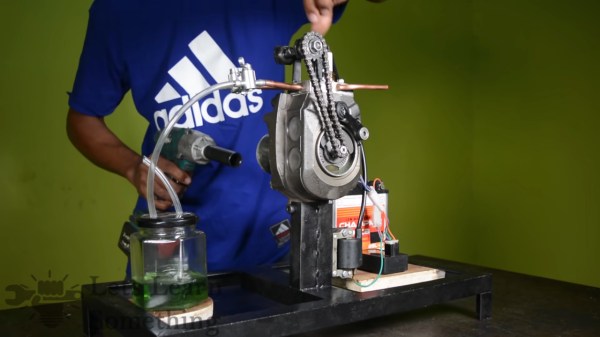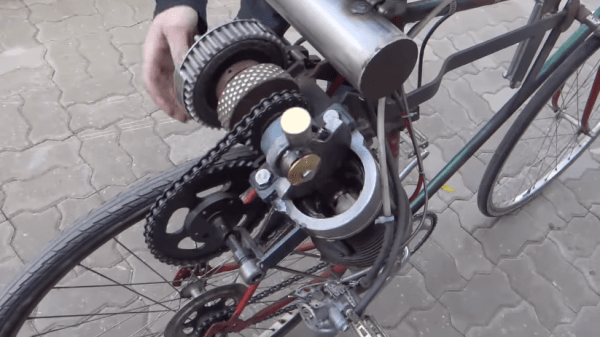For those motorcyclists looking to get a classic American-style cruiser, often the go-to brand is Harley-Davidson. However, these bikes not only have reputations for being stuck in the past, both in terms of design and culture, but they also tend to be extremely expensive—not only upfront, but in maintenance as well. If you want the style without all of that baggage, you might want to try out something like this custom motorcycle which not only looks the part, it reduces those costs by being built around a hand truck.
By the end of the project, though, the hand truck does not retain much of its original form or function. [Garage Avenger] has cut and welded it essentially into a custom frame for the diminutive motorcycle, while retaining much of its original look and feel. Keeping up with the costs savings aspect of this project, the four-stroke engine was free, although it did take some wrenching to get it running and integrated into the frame. A custom axle, a front end from another bike, a gas tank from an online retailer (that needed re-welding), and some wiring finishes out the build.
With a fresh paint job to match the original color of the hand truck, it’s off to the track. Of course it doesn’t have quite the performance of most street legal motorcycles, including some quirks with the handling and braking, but for the trails around [Garage Avenger]’s home it’s certainly a fun transportation mode he can add to his repertoire. If this is your first time seeing one of his projects, be sure to check out his other work including this drifting shopping cart and this turbine-powered sled.















